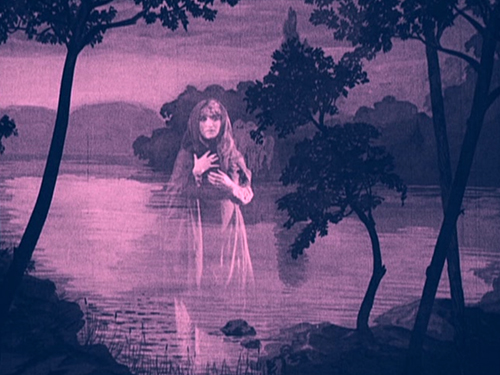
“Five months after the armistice was signed that ended World War I, Abel Gance premiered his epic J’accuse in Paris. Called the Great War, WWI was also dubbed ‘the war to end all wars,’ and Gance’s film was aimed at making that statement a reality. Many of his own friends had been killed in the trenches, and, as Gance later explained, ‘J’accuse for me was not just a film …. I had a feeling of frenzy to use this new medium, the cinema, to show the world the stupidity of war.’”
Robert Byrne1
“When Gance began work on J’accuse, the World War I was still raging. He had been rejected a number of times for military service for health reasons. Instead, he was able to pursue filmmaking, quickly expanding his ideas about what was possible in this new medium. Ultimately, though, he was mobilised into the Cinematograph Section. However, he was soon doing more mundane work loading ammunition. Then he was transferred to a poison-gas factory. This was a horrid experience, and the atmosphere exacerbated his incipient tuberculosis, leading to a sudden demobilisation. With these experiences, Gance was inspired to begin work on the film that became J’accuse. At this time, the new medium was being seen as valuable for reinforcing the war effort or as propaganda for home audiences. Think, for example, of D. W. Griffith’s Hearts of the World (1918). But Gance had a different attitude to what was going on around him, and a different aim for his new film.”
Peter Hourigan2
“J'accuse is one of the earliest cinematic indictments of war. This fact alone earns the film its status in film history. But, additionally, it is one of the first French films to use montage and superimposed shots. In a stunning series of images, close-ups of hands grasping each other, praying and raising glasses of wine as soldiers leave to fight. Gance communicates with his audience with visual metaphors: at the film’s outset, the head of a dog is placed over the head of the hunter and, at the declaration of war, the Grim Reaper is placed over the poet’s work; the filmmaker’s rapid montage cutting highlights the horror of the battle sequences, shot by Gance after joining a French army unit. (He perfected this last technique in La roue, a melodrama released in 1923, and in Napoleon.)”
Rob Edelman3
- 1Robert Byrne, “J’accuse, 1918,” San Francisco Silent Film Festival, 2018.
- 2Peter Hourigan, “On Abel Gance’s J’accuse and La roue,” Senses of Cinema, February 2009.
- 3Rob Edelman, “J’accuse,” Film Reference.

